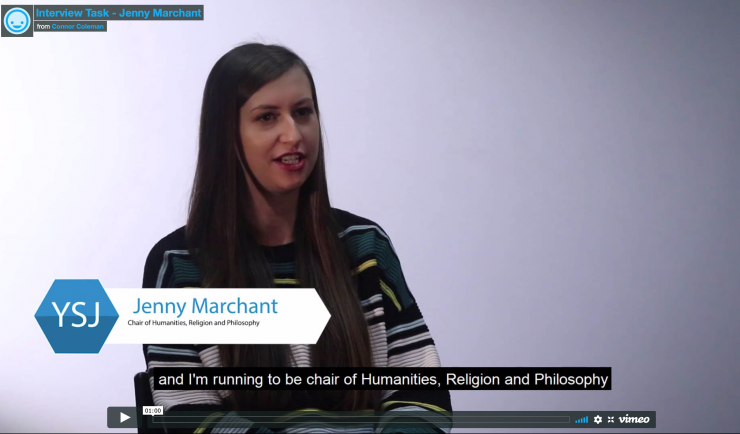For our interview task, we were working in a group of six people so we decided to assign our roles early to ensure that everyone was prepared and we could be productive with our time. We only had a one hour timetabled slot to shoot our interview so we knew it would be important to collaborate well as a team.
‘The production process can be organised into three consecutives stages: preproduction, production and postproduction.’ Gorham (2009 p.34).
For our preproduction, we ensured that we had our script and equipment prepared. I knew that the questions in the interview are a key role to contributing to the quality of the content so I decided to research my responsibilities to ensure I was prepared. It is important to allow openness and flexibility in the interview, as it allows the interviewee to respond in their own language and on their own terms (Hansen 2013 p.243). The questions that we asked were fixed questions but I ensured that I allowed the interviewee to speak as much as possible before moving on to the next question even if there was an awkward silence. We also had the choice to include an extra question of our own choice so we decided to ask – ‘Is there anything else you would like to add?’ to allow the interviewee a moment to include anything that they forgot to mention or did not have the chance to.
My role at the production stage was to ensure that the audio was working and clear and to be the interviewer. When we recorded the studio task earlier in the semester I had an issue with the audio which affected the final project as it sounded a lot lower quality than it should have. This time it would be important to carry out a quality check to ensure that all the equipment was working. We test recorded a few videos before our interviewee arrived to ensure the lighting was correct and the audio was clear. We also ensured that the set was a safe environment with cables neatly organised to prevent any potential risks. At this stage, we worked well collaboratively as a group to ensure we produced what we had planned.
Post-production was the editing stage and we had a lot of content available to use. The interview that we recorded had to be 1”00 exactly so although we did have a lot of good footage to include we had to cut it down to ensure it was the right duration. I faced some difficulties with adding subtitles as I did not render my footage so although the subtitles were working I could not see this on the screen. I researched in to this to solve the issue and found out I simply needed to render the footage to see the finished product. We designed the opening graphic using After Effects which although I had not used this before it was easy to understand and use as we had a template to work from.
Bibliography
Hansen, A. Machin, D. (2013) Media & Communication Research Methods. Basingstoke, Hampshire.
Gorham, K. Musburger R. (2009) Introduction to Media Production: The Path to Digital Media Production, 4thed. London, Focal. pp.34-36
